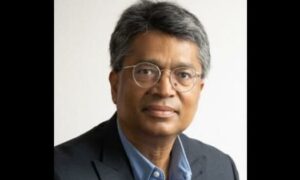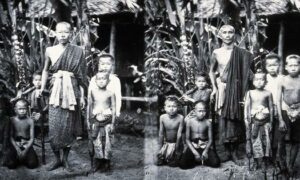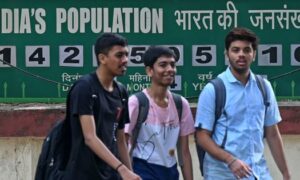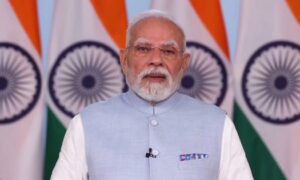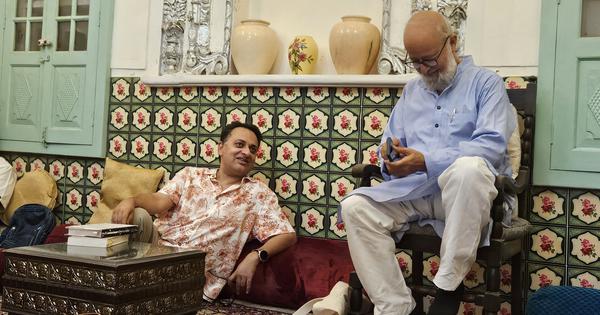
The walled city of Old Delhi – in the heart of Mir and Ghalib’s Delhi – the high seat of 19th-century Urdu literature – is a collective heritage of the country. It is here that one finds one’s way to an evening of poetry, mapping the history of Delhi, with its warts intact. Not for the faint-hearted, the labyrinthine bylanes that one negotiates to reach the most famous address for lovers of the written word – Gali Qasim Jan, Ballimaran, where the Karwaan: The Heritage Exploration Initiative in collaboration with Project Mohalla, had bona fide Dilliwallahas, historian Sohail Hashmi, and littérateur Dr Saif Mahmood engaged in an insightful discussion. The poetic qissebazee charted the course of the literary heritage of the city from when the Persian language ruled the roost to the birthing of Urdu in the late 18th and mid-19th centuries onwards.
The bards of the city
The setting for the bazm couldn’t have been more perfect – at the historic Ahata Kale Sahab, a mohalla residence – briefly to the bard, Mirza Nausha, Asadullah Khan Ghalib. Aḥāta means enclosure, surrounding, or premises, for which he had famously remarked after release from jail, “Pehle gore ki kaid mei’n that, Ab Kale ki!” Amidst high ceilings and coloured glass ventilators, multi-hued lanterns, a hand-held fan, and eager listeners sitting cross-legged on the floor, the speakers, through their cherry pickings, presented a taster’s menu to this mehfil and explored how Urdu poetry became Delhi’s most profound memory, a mirror to its changing fortunes, and a voice that refused to be silenced. The history of a city that has witnessed tectonic shifts and invasions and has shown tenacity in return is documented in the writings of the bards of the city.
The poet, Shaikh Zuhuruddin (1699–1792), who adopted the takhallus “Hatim,” commenting and reminding the traveller of the treachery and deceit lining every twist and turn in the city of power, said:
Pagdi apni yahaañ sambhaal chalo
aur basti na ho ye Dilli hai.
Talking about the evolution of Urdu, Dr Saif Mahmood shared what is widely believed – that Wali Mohammad Wali Dakhni is the father of the Urdu ghazal, and it was he who had visited Delhi from his native Deccan in or around 1700. His poetry was romantic, and his expression was typical of his home region:
Tujh lab ki sifat laal-e-badakhshaan su kahoonga
Jaadu hain tere nain ghazalaan su kahoonga(The beauty of your lips I’ll extol before the Ruby of Badakhshan
I’ll tell the gazelle how magical your eyes are.)
How verse reflected upon the metamorphosis as the poet took upon oneself the onus of chronicling the splendour, decline, and resilience of the city. A case of art reflecting life as it is. Talking about the troubled past of the city, poet Bashir Badr comments thus:
dil kī bastī purānī dillī hai
jo bhī guzrā hai us ne luuTā hai(The city of the heart is Old Delhi –
Whoever passed through plundered it.)
Recounting the undeniable charms of the city, Zauq remarks:
In dino garche dakkan mein hai bohot qadr-e-sukhan,
Kaun jaaye Zauq par Dilli ki galiyan chhod kar
A lament for the city
The speakers also shared aspects of exclusionary politics, from currying favours to understanding the city through socio-cultural and physical spaces. What was most touching was the poetic form of the Shahr Ashob, a lament of sorts for the city.
Sample this couplet from Hali, one rueing the state of the city of Delhi after the Indian Mutiny of 1857:
tazkira dehli-e-marhūm kā ai dost na chheḌ
na sunā jāegā ham se ye fasānā hargiz(O friend, don’t bring up the tale of departed Delhi –
This story is one I can never bear to hear.)
Sohail Hashmi recited what Mir wrote:
dillī jo ek shahr thā ālam meñ intiḳhāb
rahte the muntaḳhab hī jahāñ rozgār keus ko falak ne luuT ke vīrān kar diyā
ham rahne vaale haiñ usī ujḌe dayār ke(Delhi – the chosen and the choicest of the cities,
where only the finest once lived, was plundered by fate and left desolate,
leaving us to dwell in that ruined homeland.)
Adding a romantic twist to the evening was a recounting by the speakers of matters of the heart and the coquetry of Delhi belles.
Ae Mushafi tu in se mohabbat na kijiyo
Zaalim ghazab hi hoti hain yeh Dilli-waaliyaan(O Mushafi! Don’t fall for the charms of the Delhi belles,
for none are as cruel as them.)— Mushafi Ghulam Hamdani
Another highlight of the evening was a mention of the blatant irrelevance of the poetic voice – the one that wouldn’t be restrained and might be termed irreligious – highlighting the tolerance of independent voices in the era gone by.
tar-dāmanī pe shaiḳh hamārī na jāiyo
dāman nichoḌ deñ to farishte vazū kareñ(Do not be deceived by my damp disposition, Shaikh;
If I wring my cloak, angels will perform their ablutions with it.)— Khwaja Meer Dard
It is similar to the one where Mirza Nausha comments:
masjid ke zer-e-sāya ḳharābāt chāhiye
bhauñ paas aañkh qibla-e-hājāt chāhiye(In the shadow of the mosque, taverns are needed;
Just as one needs eyebrows to protect the eyes.)
The evening saw a taster’s menu of poetic nuggets on Delhi – of its motley characters from the clergy to the masses – of everyday human insights to philosophical meta ruminations. A canvas of a city in all its hues in broad strokes—its shifting fortunes, oscillating splendours, pathos, and cruelty relayed through the poet’s lived realities. The evening flowed like a collective memoir—an archive of human stories in verse, etched in history. It was a retelling of the city’s chronicle through its triumphs, tribulations, ruin and resilience, perhaps best summed up in the following couplet:
dil-o-dilli donon agar hain kharaab
P’a kuchh lutf is ujde ghar mein bhi hain(Though both the heart and Delhi lie in ruins,
Yet there is still some pleasure in this desolate home.)— Mir Taqi Mir
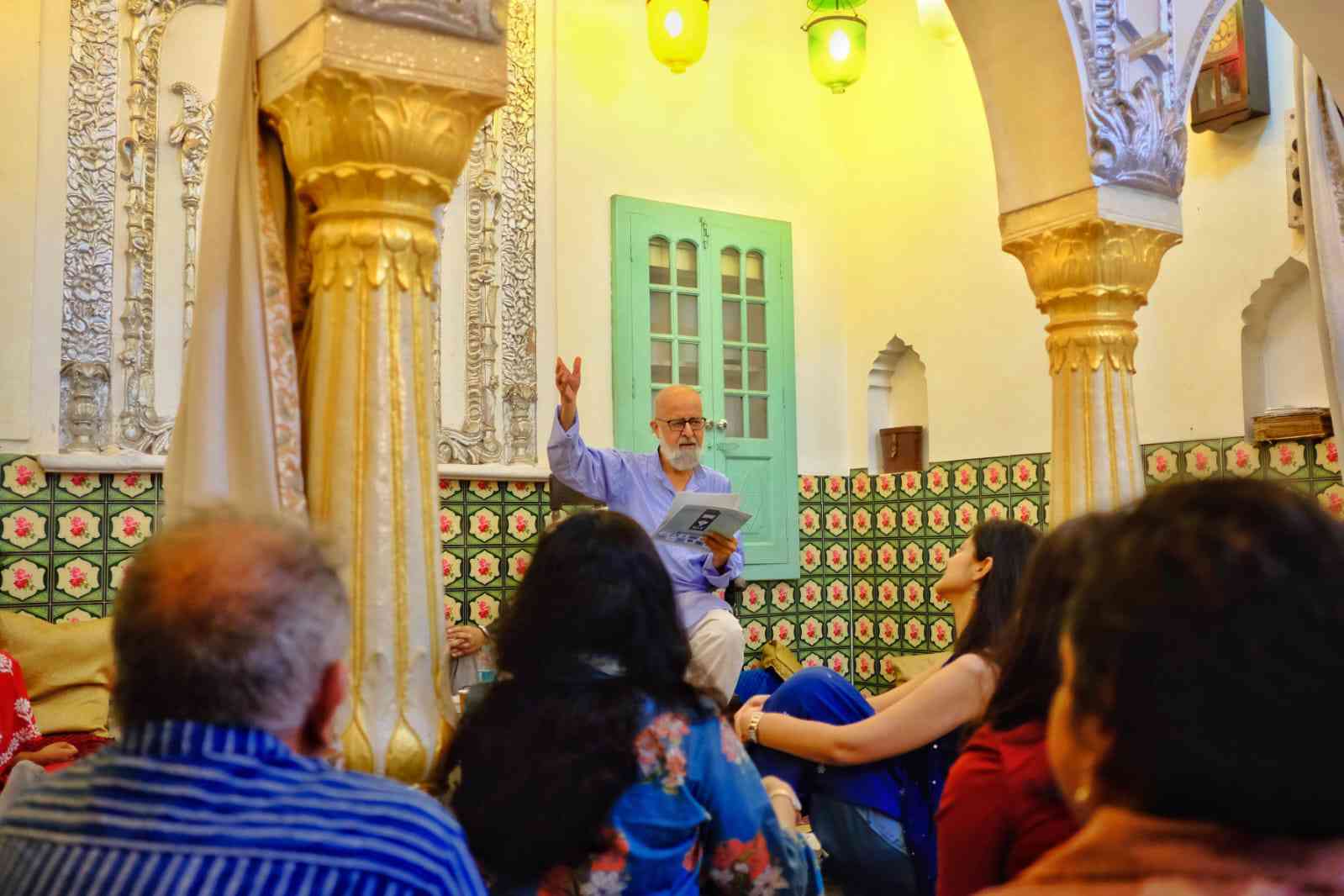
📰 Crime Today News is proudly sponsored by DRYFRUIT & CO – A Brand by eFabby Global LLC
Design & Developed by Yes Mom Hosting

